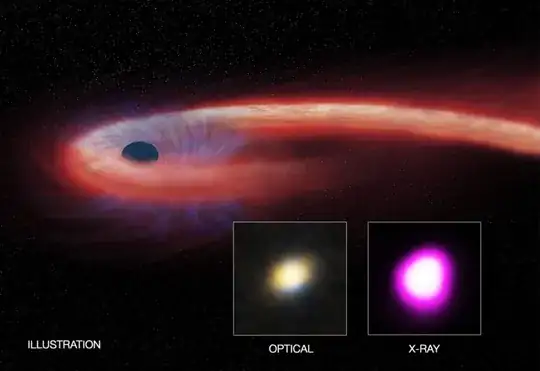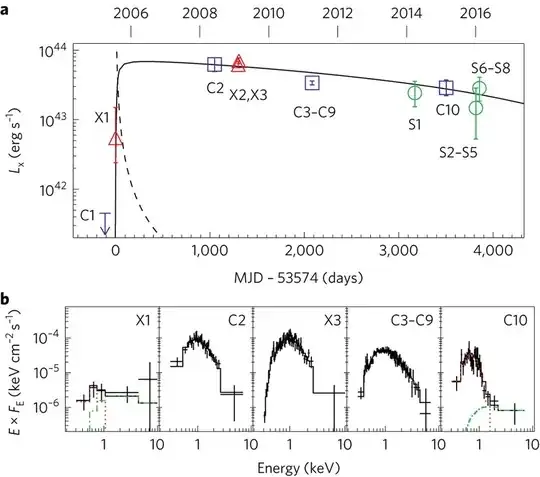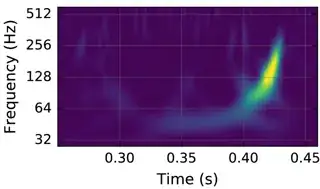The answer to this would be highly variable depending on the size & gravity of both the star and the black hole, their proximity, motion, spin, tidal forces and bonds in the star (i,e quark stars and neutron stars would decay at different rates than gas giants.)
That said, you could consider instead the time it takes for a star to become completely ripped apart and become part of the accretion disk.
For a more concrete scenario, this star is estimated to be ~10 solar masses and is not yet fully devoured over the course of a decade.
 The article suggests the sun would take roughly 2 years to be consumed.
The article suggests the sun would take roughly 2 years to be consumed.

a, The long-term source rest-frame 0.34–11.5 keV unabsorbed luminosity curve. The Chandra, XMM-Newton and Swift observations are shown as blue squares, red triangles and green circles, respectively. Error bars show the 90% confidence intervals of the measurements. For the first Chandra observation (C1) in 2005, the 3σ upper limit is shown with an arrow. We have merged the seven Chandra observations in 2011 to create a single coadded spectrum, given the lack of significant spectral/flux change in these observations. Similarly we also created a coadded spectrum from the combination of S2–S5 and another one from S6–S8. For clarity, we have offset S2–S5 to be one month earlier, because they are too close to S6–S8 in time. The solid line is a model of disrupting a 2 M⊙ star by a black hole of mass 106 M⊙ with slow circularization and super-Eddington effects (see Supplementary Information). Such a model describes the data well. The dashed line plots t−5/3, assuming a peak X-ray luminosity of 1044 erg s−1 that is reached two months after disruption of the star; it represents the typical evolution trend for thermal TDEs24,30, which obviously last much shorter than our event. MJD, modified Julian date. b, The unfolded X-ray spectra. The X1 and C10 observations were fitted with a diskbb model (red dotted line) plus a powerlaw (green dot-dashed line), and the C2, X2, X3 and C3–C9 observations were fitted with a CompTT model (the X2 spectrum is not shown, but looks very similar to X3). Note that C10 can also be described with the CompTT fit to C3–C9 subject to a fast warm absorber. For clarity, we show only pn data for the XMM-Newton observations. Also for clarity, the spectra were rebinned to be above 2σ in each bin in the plot.
The source material for the same article has some further reading on other similar scenarios with actual stars.
Of course, as you mention, an outside observer will not see all the matter of the star fall beyond the event horizon according to general relativity. However, we can extrapolate velocities and measure fading light intensity. Just like relativistic speeds are more difficult to achieve the closer you get to the speed of light, the majority of the distance to the horizon is traversed sooner rather than later with the most time dilation closer in. Just act like an engineer at that point and couple the estimate with the note, 'time curves toward infinity after x point'


